In 2009 The Guinness Book of World Records declared Casu Marzu the most dangerous cheese in the world.
Is it? Absolutely not.
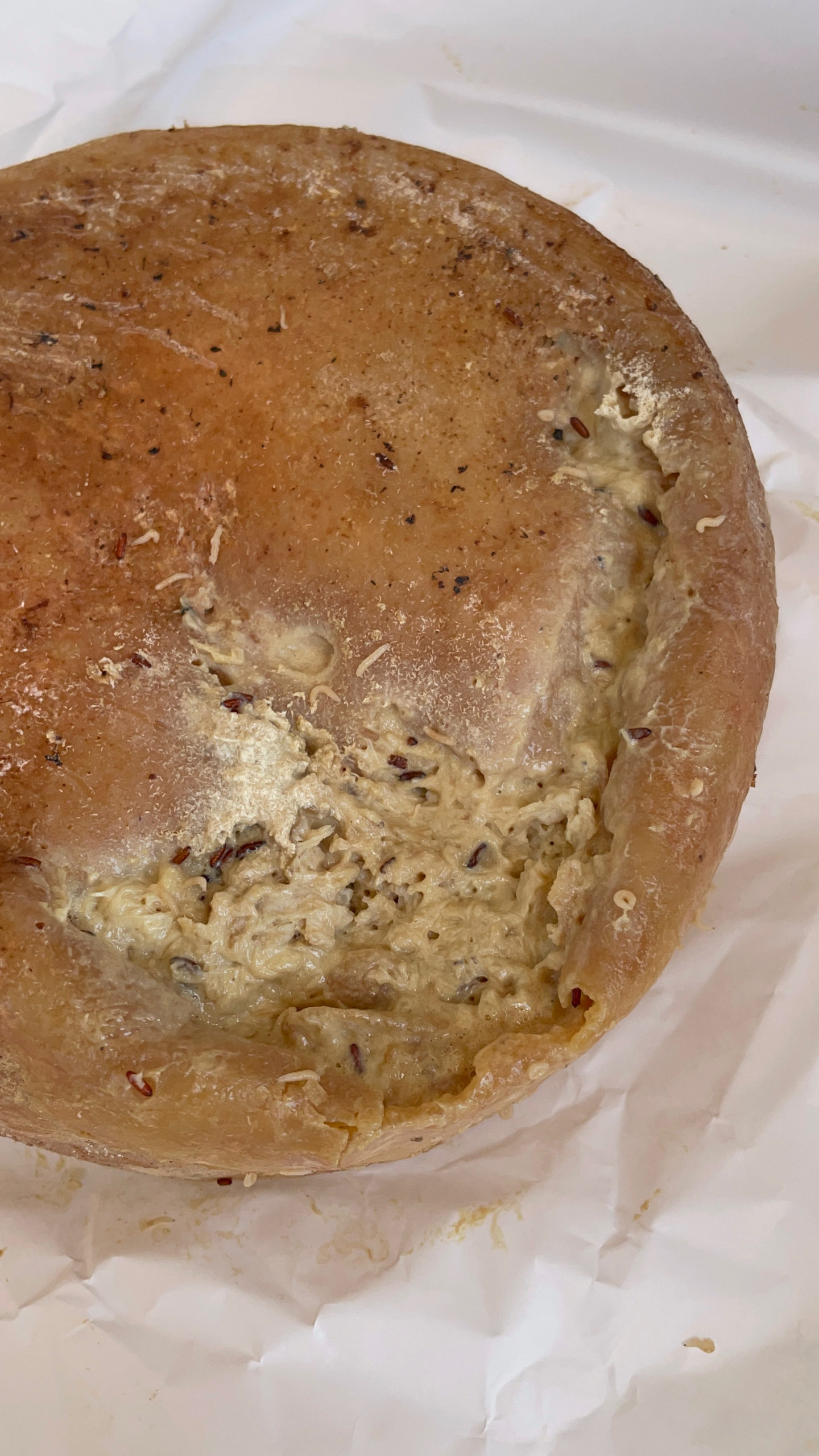
Casu Marzu is a traditional Sardinian cheese. This cheese starts its life as a typical pecorino (sheep’s milk) cheese but becomes much more interesting when the cheesemaker cuts holes in the top of the cheese to provide the opportunity for the black cheese fly, Phiophila casei, to lay its eggs there. After the eggs hatch, the larvae begin to eat, digest and excrete the cheese thereby transforming it into something completely different. The chemical and physical biological processes of the maggots’ digestion both contribute to the unique flavor, texture and aroma of the casu marzu.
What’s not to love?
Eating the most dangerous cheese in the world
Of course, Christina and I had to sample some of this local delicacy while we were in Sardinia. Full disclosure, this was not our first time trying this cheese. When we were visiting relatives in the mountains of Campania in 2017, we were caught off-guard when we discovered they made their own version of casu marzu and our entire family sampled it when it was offered to us.






Finding Casu Marzu in Sardinia
But, we absolutely had to try it again. After all, nothing compares to consciously tasting a traditional food in its authentic context to experience all of the nuances. Getting caught selling this cheese carries the risk of a 50,000 Euro fine, so it wasn’t easy to find. It took us several days, but we eventually tracked down an entire wheel of mature casu marzu in all its glory.
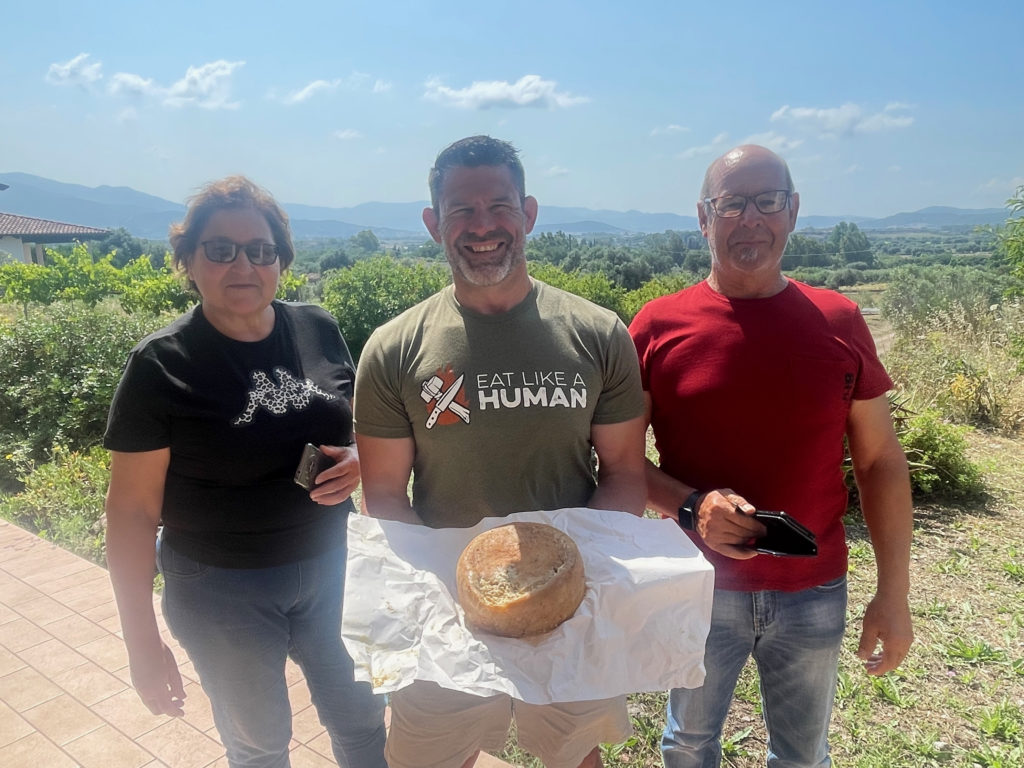
Fine dining – Sardinia style
Christina and I set a table overlooking the beautiful Sardinian landscape and recorded the experience to share it with you all and you can access the video here. The aroma was strong, so strong in fact that we could not keep it in the house. The texture was soft, reminiscent of brie or camembert. But the flavor, well that was something else entirely. It was hot, spicy, picante! It reminded me of the flavor of really strong, old provolone. And, of course, it was crawling with the maggots that played a major role in creating it.
Maggots – a sign of healthy food?
Although most of us consider maggots the unsightly by-product of rotting food in our trash, humans have actually relied upon them for some time. Maggots play an important role in composting. They are also used in forensic studies to assess the decomposition of corpses. Maggots also have important medical applications. During “maggot therapy” maggots are introduced into festering wounds to clean out necrotic dead tissue to promote healing. But, that’s not all. According to a recent article in the journal, Microbes, the antimicrobial peptides present in Maggots and other edible insects are “promising in the fight against bacterial resistance to drugs and the rising emergence of opportunistic pathogens. They can be used as single or synergistic antimicrobial agents, as a replacement for traditional antibiotics…”
And, of course, they can also be nourishing food.
According to HealthLine maggots can be a great source of protein, fat and trace elements. In 2018, Food Dive published an article titled, Are Maggots the Future of Food? in which the author also touts the nutritional value of maggots. The following year, Post Magazine, in an article, Maggots, the future of food, reported that black soldier fly maggots have a “remarkable ability to transform nearly any kind of organic waste – cafeteria refuse, manure, even toxic algae – into high-quality protein, all while leaving a smaller carbon footprint than it found.”
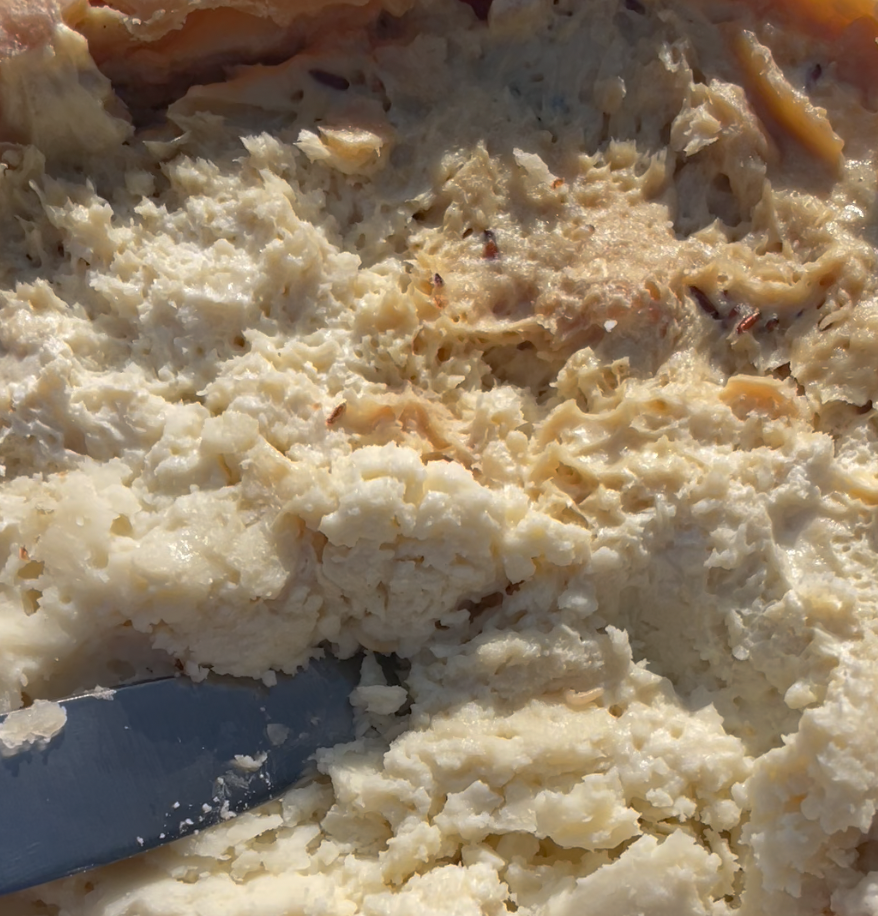
But, would you actually eat a maggot?
Chances are, you already have…plenty of them! It is impossible to grow, harvest and produce real food entirely free from insects. This is something that even the FDA recognizes. In their Food Defects Level Handbook, the FDA states, “it is economically impractical to grow, harvest, or process raw products that are totally free of non-hazardous, naturally occurring, unavoidable defects.” Defects include everything from mold to rodent hair to insects.
With regards to maggots, Business Insider reports that:
- the FDA allows up to 4% of a can of cherries to have maggots (and 5% if they are brined or Maraschino). Up to one maggot (or five fly eggs) per 250 milliliters of canned fruit juice is also allowed.
- For tomato juice, the FDA limits up to five fly eggs and one maggot per 100 grams, the equivalent of a small juice glass. Up to 15 fly eggs and one maggot per 100 grams is allowed for tomato paste and other pizza sauces.
- Mushrooms are granted more leeway — 20 maggots “of any size” per 100 grams of drained mushrooms or 15 grams of dried mushrooms.
Americans on average most likely ingest 1 to 2 pounds of flies, maggots, and mites each year without knowing it — a level the FDA says is safe.
Eating live maggots
Okay, okay, what about ingesting live maggots? Is that safe? My knee jerk reaction is to trust a traditional food that has survived for thousands of years in the heart of the world’s first identified Blue Zone that boasts some of the longest living people on the planet. To me, there is no study, no matter how scientific, how double blind, or how rigorous, that provides better evidence than witnessing the results of what a traditional diet can really create in a population! But, if that is not enough, maggots cannot survive healthy human digestive tracts. The human stomach has an incredibly low pH (1.5-2) so, any maggots that were not crushed by our teeth would certainly die in that environment. Finally, there is actually a safety benefit to eating cheese loaded with writhing maggots. The presence of live maggots in the cheese is a signal that the cheese is actually still good. Dead maggots on the cheese indicates the cheese has gone bad.
So, does casu marzu deserve the title of the most dangerous cheese in the world? Well, if I have done my job at convincing you not to believe the Guinness Book of World Records designation is nothing more than clickbait, the next obvious question you should be asking is, “what cheese deserves the title of the most dangerous cheese in the world?” Hmmmm.
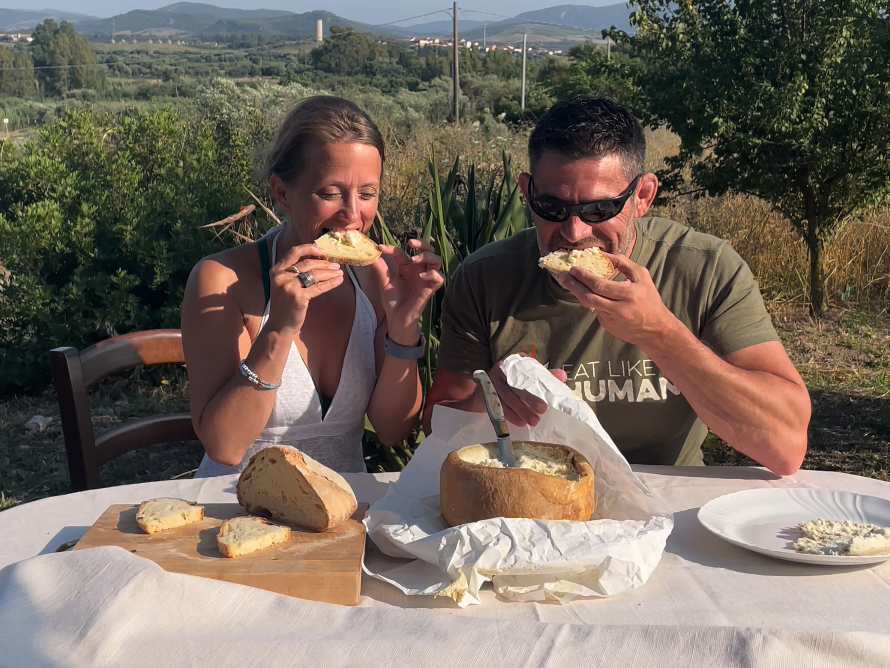
American cheese is the most dangerous cheese in the world
My answer is literally one of the most ubiquitous cheeses in America: American Cheese. While a single serving of this cheese won’t make you sick, there is no doubt continued consumption of American cheese, the cheese that dominates the diets of far too many kids and adults in this country, significantly contributes to poor health and sickness over time.
Instead of simply milk, rennet and salt, American Cheese contains 14 or more ingredients: including emulsifiers, stabilizers, and artificial colors. To make matters worse, the modern industrial food system machine has even created a bastardized version of American Cheese, which is, in itself, a bastardized version of real cheese.
The cheese product known as the Pasteurized Processed American Slice is a vegetable oil based laboratory creation that is trying to more cheaply mimic American Cheese in texture and meltability.
The real cheese to fear
I am hopeful the description of this unique cheese serves as a catalyst to change our notions about what actually constitutes a danger to our health in the world of cheese. Traditional cheeses rely on high quality raw milk, trillions of live bacteria, natural fermentation, and the skill of the cheesemaker to create a safe, nourishing, delicious food. In some instances additional living organisms further help enhance the final product such as molds with brie and camembert, additional bacteria with washed rind cheeses like epoisses, cheese mites with the German Milbenkäse cheese, and even maggots with casu marzu.
All of these traditional cheeses were able to withstand the test of time.
The truly dangerous cheeses in our food system, rather, are the multitude of cheese-like products that are all too common in our grocery stores, restaurants, and school and hospital cafeterias.

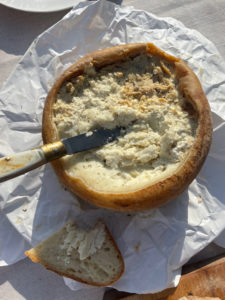




 What happened to the rest of the goat?
What happened to the rest of the goat?
Leave a Reply